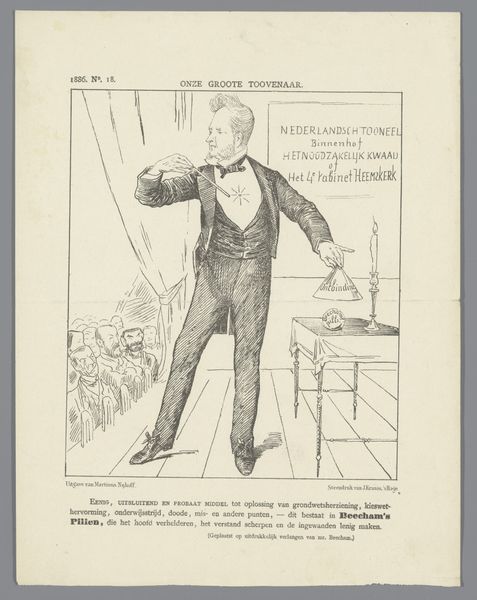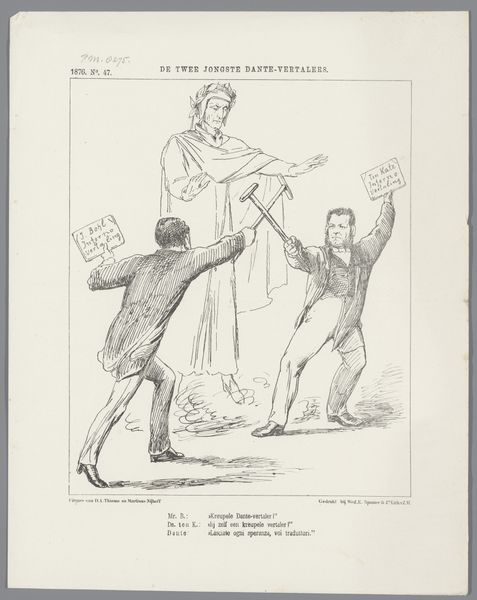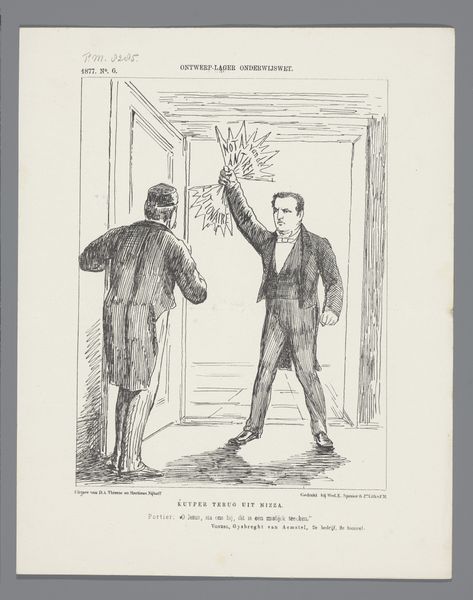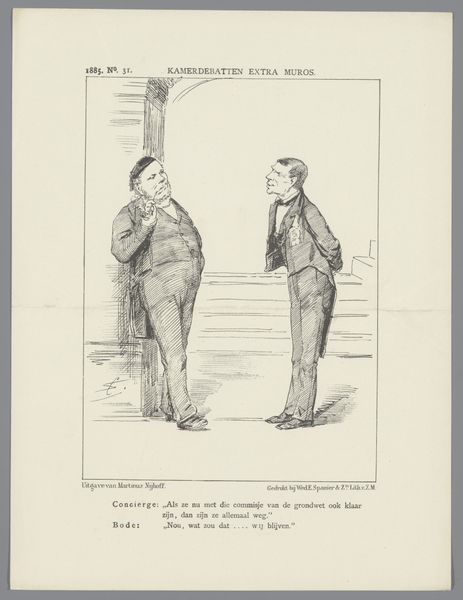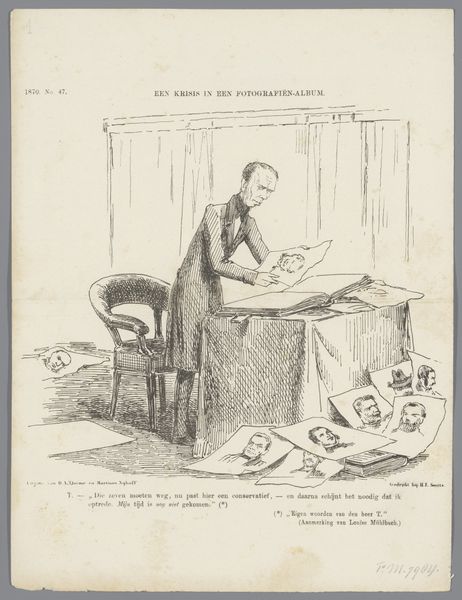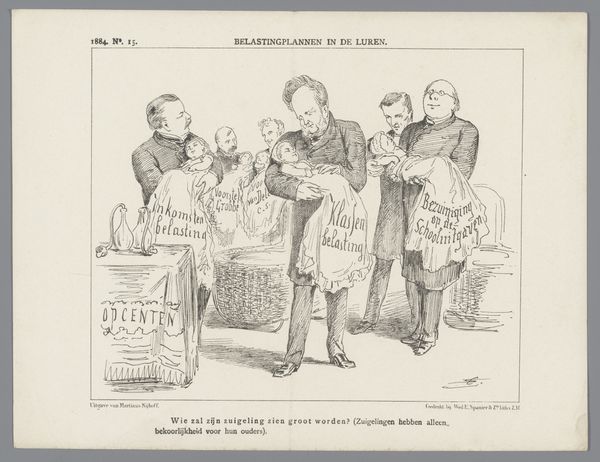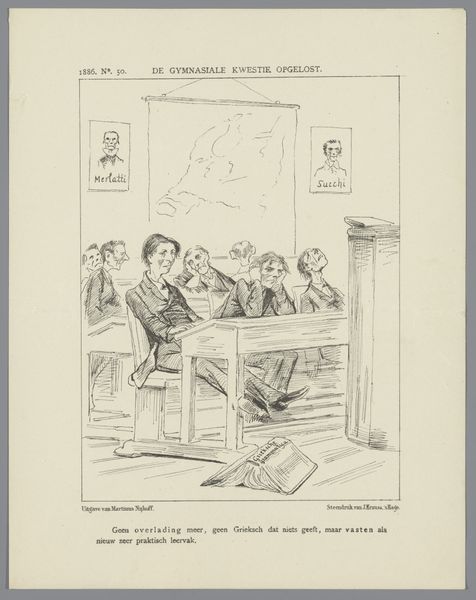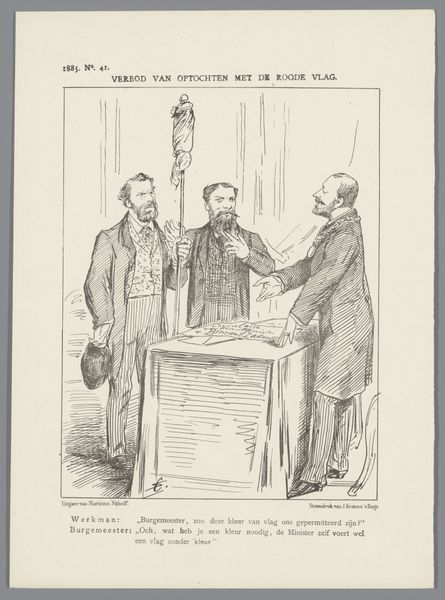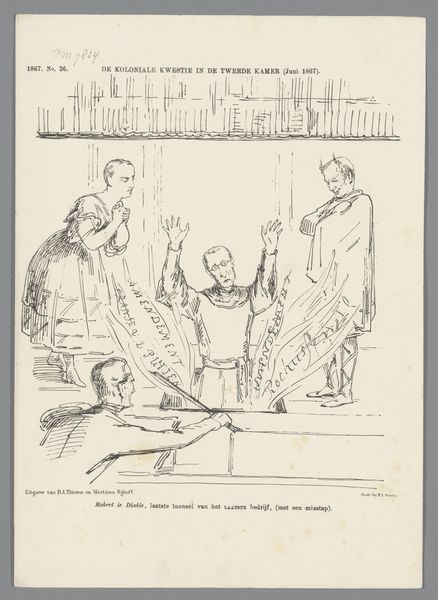
drawing, graphic-art, print, pen
#
portrait
#
drawing
#
graphic-art
# print
#
caricature
#
pen
Dimensions: height 275 mm, width 215 mm
Copyright: Rijks Museum: Open Domain
Editor: This print, created in 1888 by Johan Michaël Schmidt Crans, is titled "Spotprent met Abraham Kuyper." It’s a pen drawing, quite detailed, depicting a man surrounded by hanging bells. It feels very satirical to me, almost theatrical. What do you see in it? Curator: The bells immediately jump out. Consider their historical usage: bells signal announcements, warnings, and even religious calls. Here, they appear to represent different sectors of Dutch society, perhaps even ministries given the labels – 'Justitie', 'Oorlog', 'Marine', 'Kolonien' – written above each bell. Notice how they hang, seemingly at Kuyper's command, almost like trophies. What does this tell us about his ambition and influence during this era? Editor: That's interesting, I hadn’t considered them as symbolic representations of different societal sectors. It seemed more like he was controlling them with his gestures. Curator: Exactly! The gesture and pipe suggest authority and self-possession, playing into a carefully constructed public image. Caricatures like this rely on inflating specific traits to create a memorable, often critical, commentary. What memories or associations would the original audience likely have connected to this figure? Editor: I suppose people would recognize him instantly and understand the satire aimed at his political power and influence over various sectors, the ministries hanging like prizes under his command. So the artist is using established symbols to create a potent message. Curator: Precisely. Visual symbols embed collective memory, providing a shorthand to communicate complex ideas. Editor: It’s fascinating to see how much history and social commentary is packed into a seemingly simple drawing. Thanks for pointing out all of these visual cues! Curator: My pleasure. Spotting the cultural context really brings historical artwork alive.
Comments
No comments
Be the first to comment and join the conversation on the ultimate creative platform.
